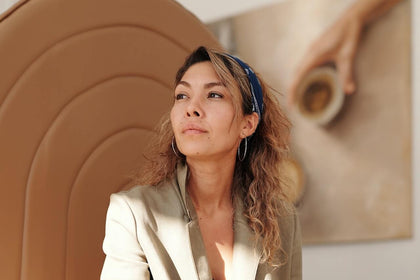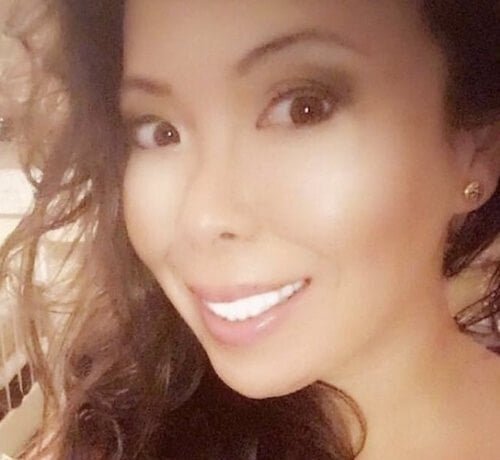Skincare — and, more specifically, multistep skincare routines to treat different skin types — have become a staple in many people’s daily lifestyles. But have you ever stopped to consider the different scalp types? Just like your facial skin and its corresponding treatments, your scalp type has its own unique needs when it comes to properly caring for it.
It’s likely you may not have considered how the skin of your scalp type can (and does) have an impact on the overall health of your hair. Adapting your hair and scalp care to address these concerns can help create the ideal foundation for healthy hair. Here’s how to assess exactly what scalp type you’re working with, as well as what you need to know about your scalp, skin and hair care in order to create the bridge to hair wellness. Plus, learn more about the best scalp care products for you.
#include-related-slider#
Your Scalp and How to Maintain It
Healthy hair begins from within, meaning a balanced, calm scalp is key.
"Just like your skin, the scalp tends to have certain specific types. These scalp types include dry, oily, dandruff prone and more," said Jennifer Kennedy, director of skincare and registered nurse at PFRANKMD by Dr. Paul Jarrod Frank.
Let's break it down. Simply put, there are essentially two factors that determine the health and type of your scalp: the amount of oil produced by your scalp and its pH balance.
Shop: Scalp Scrubber
Well Balanced Scalp 101
The pH balance is a general scale that determines the acidity or alkalinity of an environment. An ideal, well-balanced scalp should fall within 4.5-5.5 on this scale. Within the scalp, there should be a mildly acidic environment in order to aid in preventing bacteria and keeping skin clean. Too much acidity, however, can create tangles or excess oil, leading to oily hair.
Conversely, having too little acidity in the scalp may strip the hair of its natural protection, allowing fungus and bacteria to accumulate. Low scalp acidity can also impact the scalp's hydration levels, creating scalp irritation, inflammation and/or an itchy scalp or dry hair.
Along with maintaining the proper pH balance, having an adequate amount of natural oil production is important in the health of the hair and scalp. Sebaceous glands that produce natural oils are found throughout the head, playing an essential role in the strength and luster of your hair. Overactive sebaceous glands can impact the oil production process, leading to the excess grease that causes greasy hair, an oily scalp or a combination scalp.
VEGAMOUR founder Dan Hodgdon states: "A healthy scalp is necessary for hair growth. Excess inflammation or irritation in the scalp can cause hair loss. Avoiding products that cause irritation and treating inflammatory conditions in the scalp (such as seborrheic dermatitis or psoriasis) and necessary for protecting the hair follicle and promoting normal growth."
Related: Why a Healthy Scalp is Important for Healthy Hair
How to Assess Your Scalp Type
Establishing hair wellness is a multifaceted process, and having an idea of your scalp type is a key element in finding what works for both your hair and scalp's needs. If you're experiencing any sort of hair thinning, hair fall or issues with hair density, the state of your scalp could be a key culprit.
Just like with the varied facial skin types, there also tend to be different scalp types. These can include:
- Dry scalp
- Oily scalp
- Combination scalp
- Normal scalp
For example, a dry scalp can lead to inflammation or irritation that creates a less-than-ideal environment for healthy hair growth and may also cause an itchy scalp. On the flip side, an oily scalp may be reflective of an overproduction of oil, creating buildup that hinders hair growth.
Fortunately, there are ways to establish a scalp and hair care regimen based on your scalp type: Using styling products combined with other hair care products that effectively work to address, prevent and alleviate issues both in the scalp and strands.
The GRO Balance & Boost Kit is a great option for any and all hair and scalp types. This trifecta works together to target hair from the roots. It includes:
This kit can help you balance, cleanse and nourish your scalp, paving the way for healthier hair by visibly reducing signs of hair thinning for thicker, fuller-looking tresses.
Oily Scalp
“An oily scalp tends to leave hair looking stringy," said Frank. "The scalp looks constantly wet and heavy."
If you notice your hair clumps together, lie flat against the head or gets noticeably greasy, overactive sebaceous glands can be creating excess oil.
Manage an oily scalp by choosing the right shampoo and conditioner. Pick a shampoo and conditioner that focuses on cleansing, hydrating and balancing, which will help prevent an increase in the sebum production that leads to excess oil.
GRO Revitalizing Shampoo and Conditioner is suitable for all hair types. Plus, the pair includes a vegan alternative to animal keratin: Karmatin™. This microencapsulated vegan b-SILK™ protein physically bonds to the hair follicles, remaining attached to strands even after rinsing your hair. There's also wild harvested marula oil, organic murumuru butter and ximenia oil to add moisture and fight damaging free radicals without leaving behind pore-blocking residue on your scalp.
You can also try the GRO Foundation Kit, which includes GRO Revitalizing Shampoo and Conditioner and GRO Scalp Detoxifying Serum for a complete scalp routine.
Dry Scalp
“A dry scalp is more prone to inflammation, itching, dryness and dandruff,” said Frank. If you're noticing an increase in the frequency of white flecks, irritation, and itching, then you might have a dry scalp.
First, address the lack of moisture. Choose a botanical-powered, natural hair serum like GRO Scalp Detoxifying Serum. Integrate it into your regular hair care routine once per week, after you wash. This way, you won't rinse out the powerful plant actives. The serum also utilizes the beneficial elements of microencapsulated, full-spectrum hemp to soothe scalp stress and eliminate bacteria harmful to healthy hair growth.
Combination Scalp
As with the skin on your face, your scalp can also have a combination of oily and dry areas, which may be the result of sensitive skin or hormonal changes. Combination skin found on the scalp can vary from dry skin to flat, greasy patches, and hair texture may look wiry or lackluster.
Consider giving your combination scalp biome a boost by using the GRO Revitalizing Scalp Massager to gently work in GRO Hair Serum, which includes powerful vegan phyto-actives to encourage thicker looking hair in as soon as 90 days.
Hair Do's and Don'ts
“Everyone, including those with an oily scalp, can develop dandruff. A normal scalp can turn irritated if buildup is not removed, thus causing inflammation and dandruff," said Frank. "It is important to use proper hair hygiene and wash your hair at least every other day or every third day, regardless of your scalp type."
Finally, keep in mind that balance begins from within: Integrate a holistic approach to your overall health and hair wellness. Eating a well-balanced diet, getting enough sleep, staying hydrated, moving each day and practicing self-care can pave the road to healthy hair and a happy scalp!
#include-related-slider#
More From VEGAMOUR
- Does Dandruff Cause Hair Loss? A Dermatologist Explains
- Are Dandruff and Dry Scalp the Same Thing?
- Does Coconut Oil Help With Hair Growth?
- How to Cleanse Your Scalp in 6 Steps
Photo credit: Marcus Aurelius/Pexels
Back



















